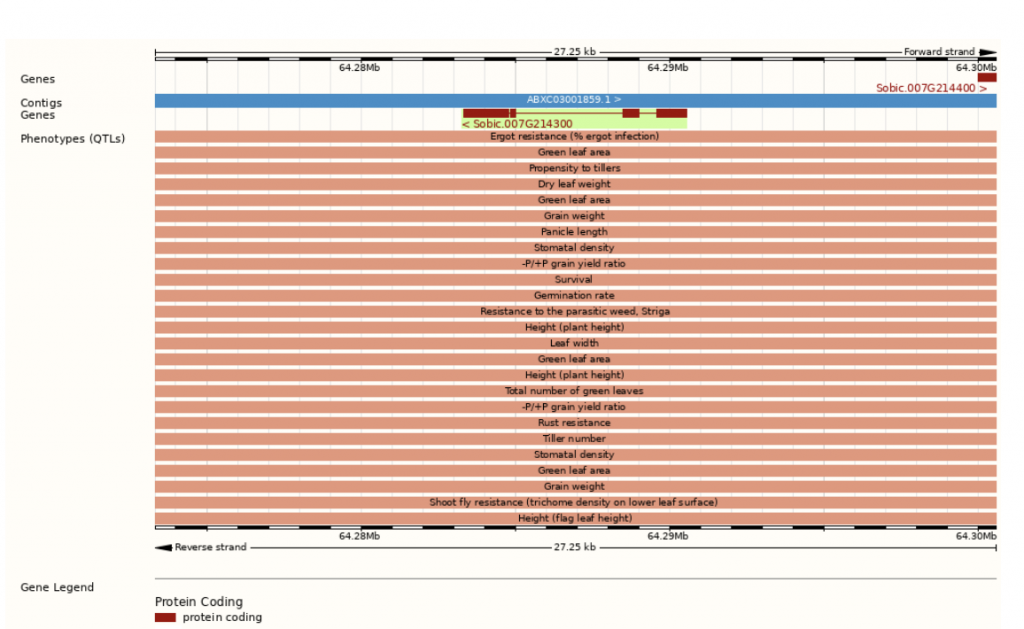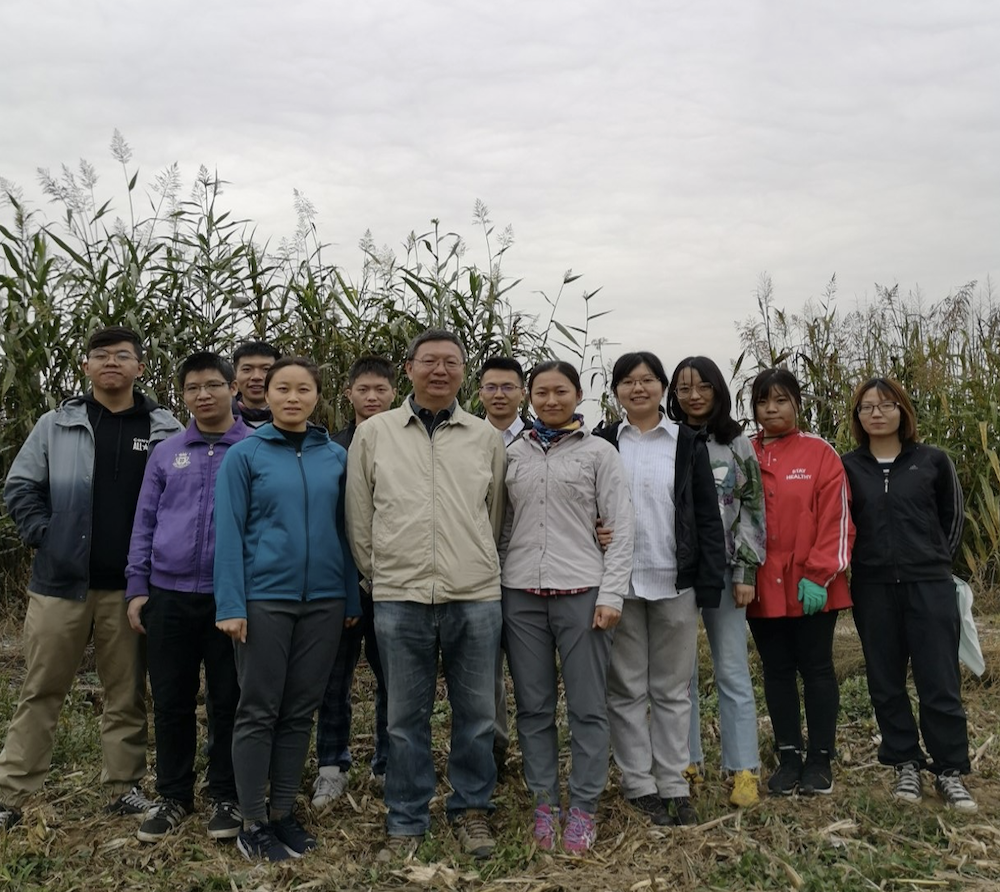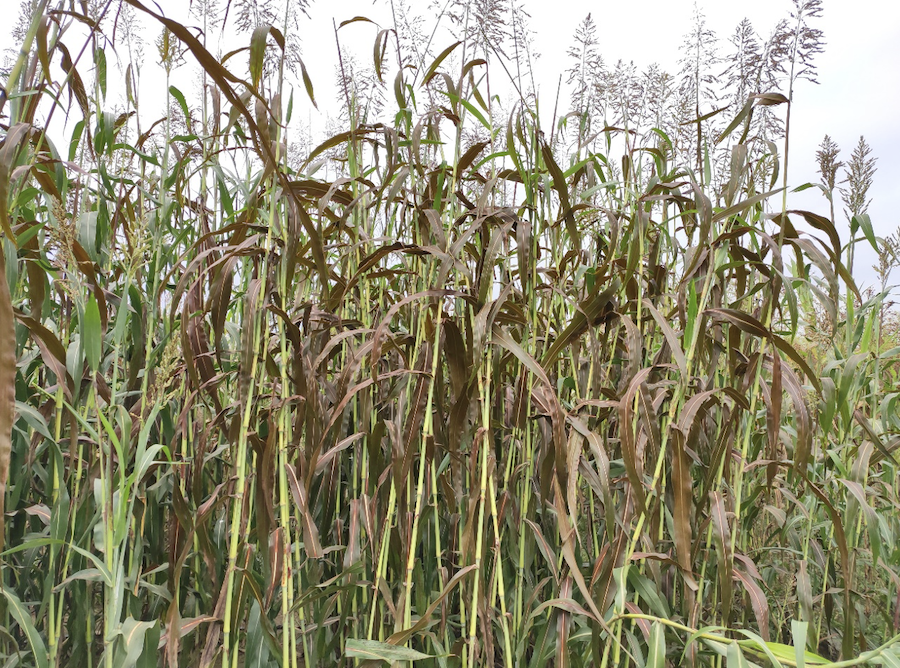Analysis of Serendipitously Observed Red Leaf Phenotype in Sorghum
Red leaves are sometimes seen in sorghum as a response to biotic or abiotic stressors, but seldom are seen as an inheritable phenotype. Researchers from China Agricultural University, Chinese Academy of Sciences, and Japan Grassland Agricultural and Forage Seed Association discovered that crossing two green leafed sorghum accessions produced some red leafed F1 hybrid plants. Lv et al. assessed the plant cells in both red and green leaves and discovered that in the red leaves the mesophyll cells accrued red compounds which then disperse throughout the leaf. Additionally, the chloroplasts in red leaves degraded faster than those in green leaves. They performed a metabolic analysis which showed that red leaves had a greater amount of flavonoids (including six anthocyanins) than green leaves. In the same vein, the upregulation of flavonoid biosynthesis genes was shown in the transcriptome analysis. Based on these results, the scientists hypothesized that the red compounds building up in red leaves are likely flavonoids and anthocyanins. A segregation analysis was performed as part of the investigation into the underlying genetics behind the red leaf trait, which was mapped to a 55-kb region on chromosome 7 containing seven genes. Sobic.007G214300, known to encode wall-associated receptor kinase (WAK), was determined to be the most likely candidate for RL1, based on sequencing, reverse transcription-polymerase chain reaction, and transcriptome analysis. It is interesting to note that in many plant species WAK orthologs play a part in fungal and bacterial resistance.
The study provides us with a better understanding of the molecular mechanism of the red leaf phenotype in the natural population of sorghum. – Cai
SorghumBase example:
Sobic.007G214300 encodes a wall-associated kinase, and is the most likely candidate for the red leaf 1 (RL1) gene.

Reference
Lv Y, Chen J, Zhu M, Liu Y, Wu X, Xiao X, Yuyama N, Liu F, Jing H, Cai H. Wall-associated kinase-like gene RL1 contributes to red leaves in sorghum. Plant J. 2022 Oct;112(1):135-150. PMID: 35942607. DOI: 10.1111/tpj.15936. Read more
Related Project Website:
Prof. Hongwei Cai’s page at the College of Agronomy and Biotechnology
http://cab.cau.edu.cn/art/2022/4/28/art_27217_1182.html



